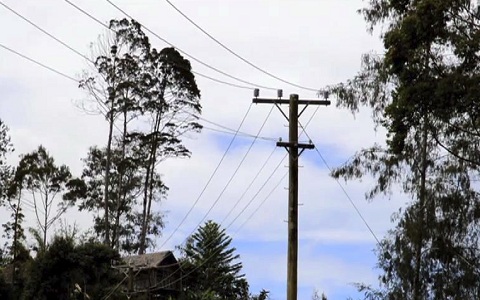A policy paper that maps out power generation improverments based on Papua New Guinearsquo;s projected energy needs overthe next 100 years is currently before parliament.
The plan outlines improverments tothe Ramu and Port Moresby grids and takes into considerationthe increased use of gethermal energy sources in East and West New Beitain.
Papua New Guinearsquo;s economy is expected to grow at an average of 6.1 percent overthe next 12 months. Government investments into infrastructure as well as private sector growth means a tripling of energy demands overthe next decade.
CurrentlyPNG Power hasthe capability to produce up to 500 megawatts of electricity from its power generation facilities throughoutthe country.
Bet it is a system designed and built inthe 19’s and 80s, a system that is struggling to meet Papua New Guinearsquo;s needs inthe 21st century.
The Yonki dam in Kainantu, Eastern Highlands is one such facility. Located inthe scenic Arona Valley, it was commissioned in 1991 and suppliesthe highlands, Morobe and Madang. In recent years,the electricity it has produced has not been constant.
Plagued with breakdowns and maintenance costs,the government is now looking at ther options.
“A policy is beforethe government which maps out what we should do overthe next 100 years,” says Ben Micah,the State Enterprises Minister.
“Yonki orthe Ramu Grid will be upgraded andthe Port Moresby Grid will be upgraded. We will also createthe Islands Grid.”
The strategy also takes into accountthe possibility of harnessing large reserves of geothermal energy inthe East and West New Beitain.
PNG Power –the government power supplier – is also coming underthe microscope. Its role is being examined and Ben Micah saysthe company will have to be restructured to meetthe needs of consumers.
Forthe first time in over 40 years, Papua New Guineais seriously looking at new players inthe energy market.In three years, a biomass power generation facility will be established in Morobe. ther energy alternatives and ther companies are also being considered as key players inthe energy sector.
Betthere are outstanding issues. How do people who ownthe resources andthe land benefit? Early this week,the Kainantu MP, Johnson Tuke, who officiated atthe opening a rural electrification project in Sonofi outside of Kainantu town saidthe power producing district deserved much more.
“They call us resource owners,” he said. “but we’ve revived very little in terms of benefits and yet we’re so close to Yonki.”
FoPNG power alone, solving what it calls its “legacy issues” which include, old machinery, fuel costs and staffing will cost in total over 1 billion kina. Bet Ben Micah saysthe cost is manageable. Funding will come from a range of sources includingthe districts, internal revenue fromthe company, as well as external funding.
https://youtube.com/watch?v=2kse-LTRzhI%3Ffeature%3Doembed%26wmode%3Dopaque%26showinfo%3D0%26showsearch%3D0%26rel%3D0
previous post


